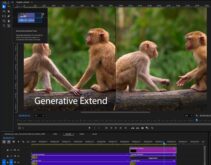*/]]>
If you bought a camcorder ten years ago, chances were it was DV and stored its video on DV tape. Three years ago, it was likely HDV and DV tape. Today, it could be any one of five or six HD formats (AVCHD, HDV, DVCPRO HD, XDCAM HD, AVC-Intra) stored on four or five different storage mechanisms (tape, SD card, P2, SxS, hard disk, optical disc).
Concerned about navigating through this maze of options? Well, if so, you’re in this right place. Over the next 3,000 words or so, I’ll detail these options and others, tell you which ones to care about, and the questions to ask before buying your next HD camcorder. I’ll even detail the top four camcorders to consider in 2009.
To make my word count and maintain my sanity, I’ll focus on 3CCD camcorders that cost between $3,500 – $5,000, which I think is the real sweet spot for high quality and value. If you’re a bargain basement shopper, or indie film maker or wannabee, you might learn some valuable information, but you’ll probably want to buy a different class of camcorder. With so much to get through, let’s jump right in.
Question 1: Er, parlez vous progressive?
At this point, it’s generally accepted that progressive scan source video produces higher quality frames for streaming than interlaced source, so if you’re purchasing for streaming production, be sure to purchase a camcorder that shoots in progressive mode. Unfortunately, there’s lots of debate as to which camcorders actually shoot in “true” progressive.
To explain, Panasonic has traditionally been credited with true progressive recording, while other vendors used different techniques to simulate progressive. In contrast, Sony’s CineFrame mode, as implemented by Sony in the HDR-FX1/HVR-Z1U class of camcorders, produced noticeably lower resolution video than the interlaced mode, which translated to slightly fuzzy detail. For this reason, in most instances, shooting in interlaced mode and deinterlacing in your editor or encoding tool would produce better results than shooting and producing in CineFrame mode. Interestingly, Sony’s HVRZ5U, which will replace the Z1U in 2009, records in true progressive mode, making it a good choice for streaming production.
Conversely, though Canon never claimed “true” progressive for the Frame mode used in the XH A1 line of camcorders, I found the quality identical to side-by-side progressive shots from the Panasonic HVX200, which is credited with true progressive. For this reason, I use Frame mode when shooting for streaming, and wouldn’t hesitate to buy or recommend the XH A1S for those buying for streaming applications.
Fortunately for us, true progressive scan capture is supported in most newer camcorders, though more for indie filmmakers trying to achieve the filmic look than for streaming producers seeking top quality. If you’re looking at older models, however, you may need to scratch beneath the surface to figure out if the progressive is true or faux.
 Streaming Learning Center Where Streaming Professionals Learn to Excel
Streaming Learning Center Where Streaming Professionals Learn to Excel








